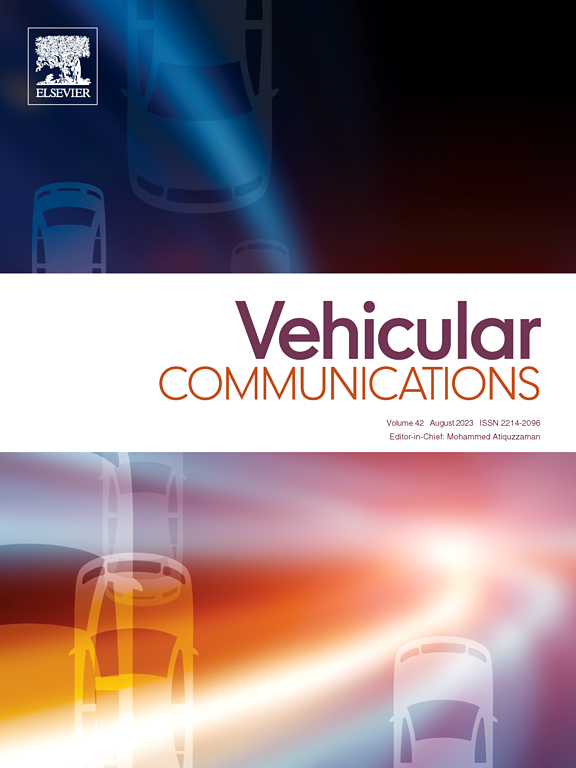SC-VDTwinAuth:基于智能合约的车辆数字孪生网络切换认证协议
IF 6.5
2区 计算机科学
Q1 TELECOMMUNICATIONS
引用次数: 0
摘要
车辆数字孪生网络由于地理上的差异或其加速扩展而被划分为多个网络,这就需要车辆跨区域的安全、不间断的过渡。因此,在这种动态拓扑结构中,跨区域车辆的切换过程变得势在必行。文献中包含了大量基于区块链的移交机制,专门为车辆和路边单位设计。不幸的是,由于车辆数字孪生网络的高计算开销和对安全威胁的敏感性,其中一些方法在车辆数字孪生网络中是不可行的。因此,本文提出了一种基于智能合约的基于区块链的车辆数字孪生网络的切换认证协议。它完全依靠数字孪生,减轻了车辆的负担,提高了交接过程的效率和安全性。通过real-or-random oracle模型(ROR)和非数学分析,研究了针对sybil和模拟攻击等攻击的安全强度和能力。操作分析使用基于安全功能、计算和通信开销的相关工作来评估所提议的机制。此外,为了说明建议的智能合约的可行性和区块链消费的合理成本,它通过以太坊测试网络实现。因此,所获得的结果表明了车辆数字孪生网络机制的相关性。本文章由计算机程序翻译,如有差异,请以英文原文为准。
SC-VDTwinAuth: Smart-contract Assisted Handover Authentication Protocol for Vehicular Digital Twin Network
Vehicular digital twin network is partitioned into multiple networks either due to the geographical differences or their accelerating expansion, which necessitates a secure and incessant transition of cross-regional vehicles. Therefore, in this dynamic topology, the handover process for cross-regional vehicles becomes imperative. The literature encompasses an abundance of blockchain-based handover mechanisms, specifically designed for vehicle and the roadside units. Unfortunately, some of these are not feasible for vehicular digital twin networks due to their high computational overhead and susceptibility to security threats. Therefore, this paper presents a handover authentication protocol for the blockchain-based vehicular digital twin networks, leveraging the smart contract. It entirely depends on digital twin, which reduces the burden of the vehicle and enhances the efficiency and security of the handover process. Security strengths and competency against attacks like sybil and impersonation attacks are investigated through a real-or-random oracle model (ROR) and non-mathematical analysis. The operational analysis evaluates the proposed mechanism with pertinent works based on security functionalities, computation, and communication overhead. Moreover, to illustrate suggested smart contract's viability and the reasonable cost of blockchain consumption, it is implemented via the Ethereum test network. Hence, obtained results indicate the relevancy of the mechanism for vehicular digital twin networks.
求助全文
通过发布文献求助,成功后即可免费获取论文全文。
去求助
来源期刊

Vehicular Communications
Engineering-Electrical and Electronic Engineering
CiteScore
12.70
自引率
10.40%
发文量
88
审稿时长
62 days
期刊介绍:
Vehicular communications is a growing area of communications between vehicles and including roadside communication infrastructure. Advances in wireless communications are making possible sharing of information through real time communications between vehicles and infrastructure. This has led to applications to increase safety of vehicles and communication between passengers and the Internet. Standardization efforts on vehicular communication are also underway to make vehicular transportation safer, greener and easier.
The aim of the journal is to publish high quality peer–reviewed papers in the area of vehicular communications. The scope encompasses all types of communications involving vehicles, including vehicle–to–vehicle and vehicle–to–infrastructure. The scope includes (but not limited to) the following topics related to vehicular communications:
Vehicle to vehicle and vehicle to infrastructure communications
Channel modelling, modulating and coding
Congestion Control and scalability issues
Protocol design, testing and verification
Routing in vehicular networks
Security issues and countermeasures
Deployment and field testing
Reducing energy consumption and enhancing safety of vehicles
Wireless in–car networks
Data collection and dissemination methods
Mobility and handover issues
Safety and driver assistance applications
UAV
Underwater communications
Autonomous cooperative driving
Social networks
Internet of vehicles
Standardization of protocols.
 求助内容:
求助内容: 应助结果提醒方式:
应助结果提醒方式:


